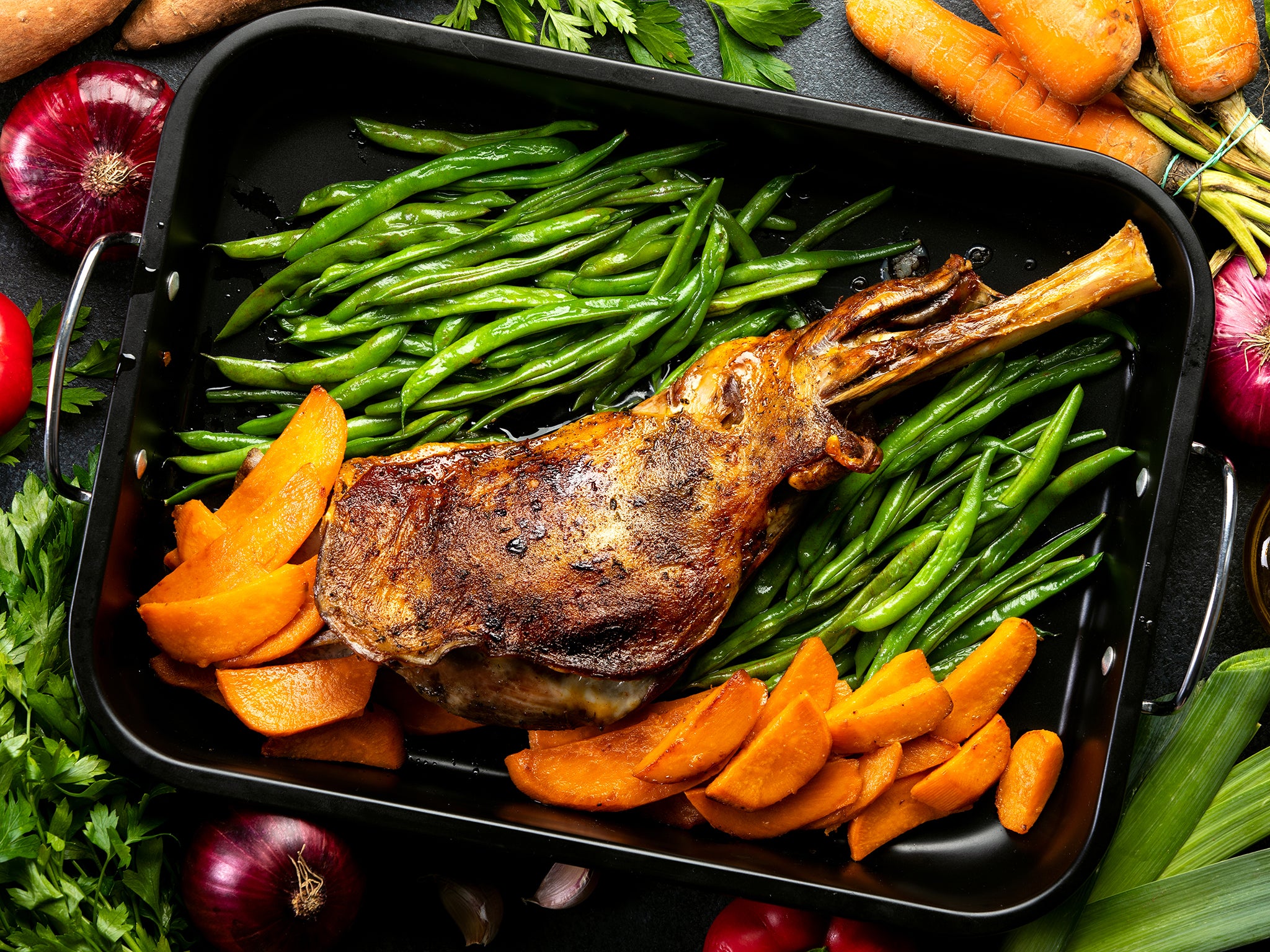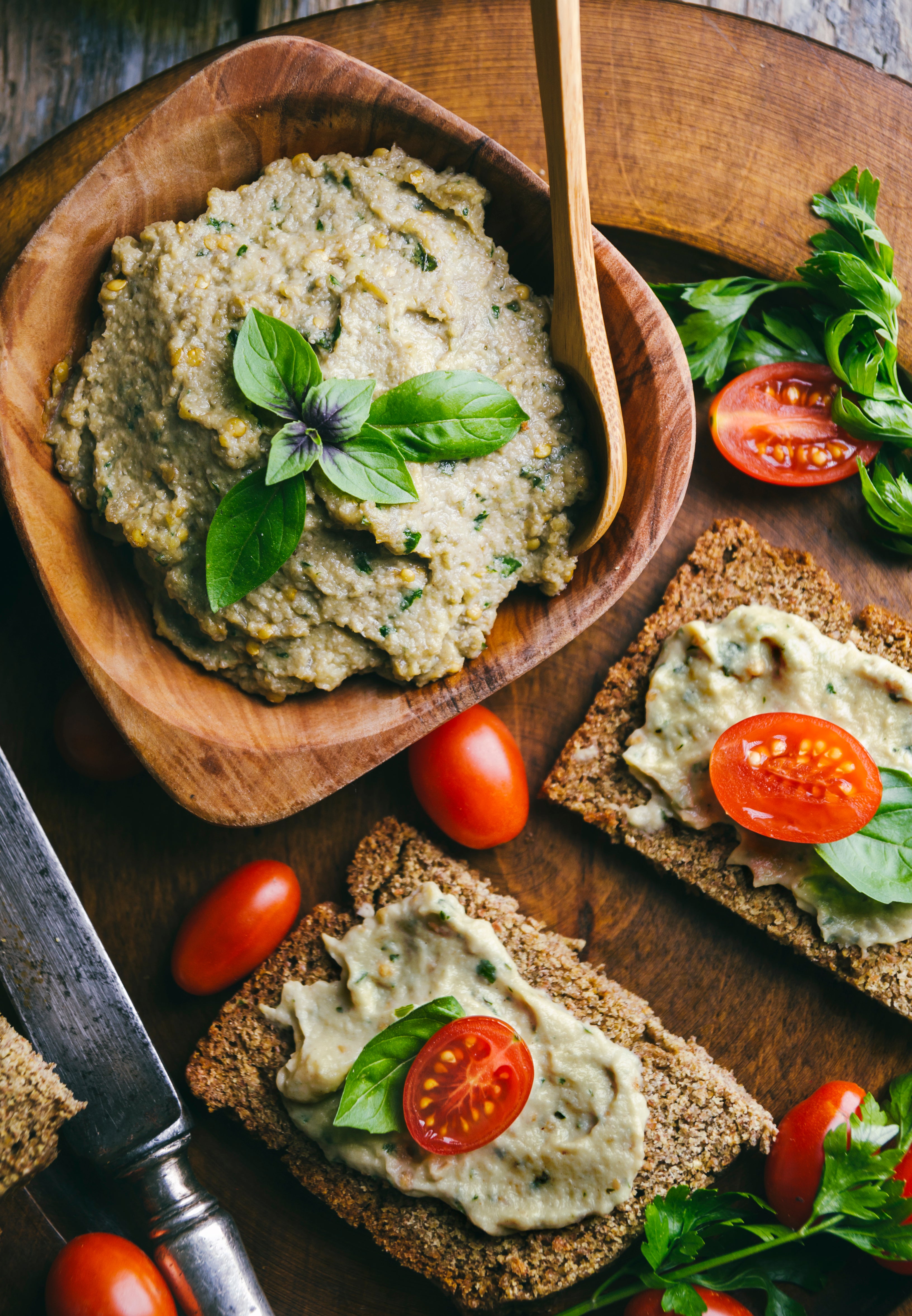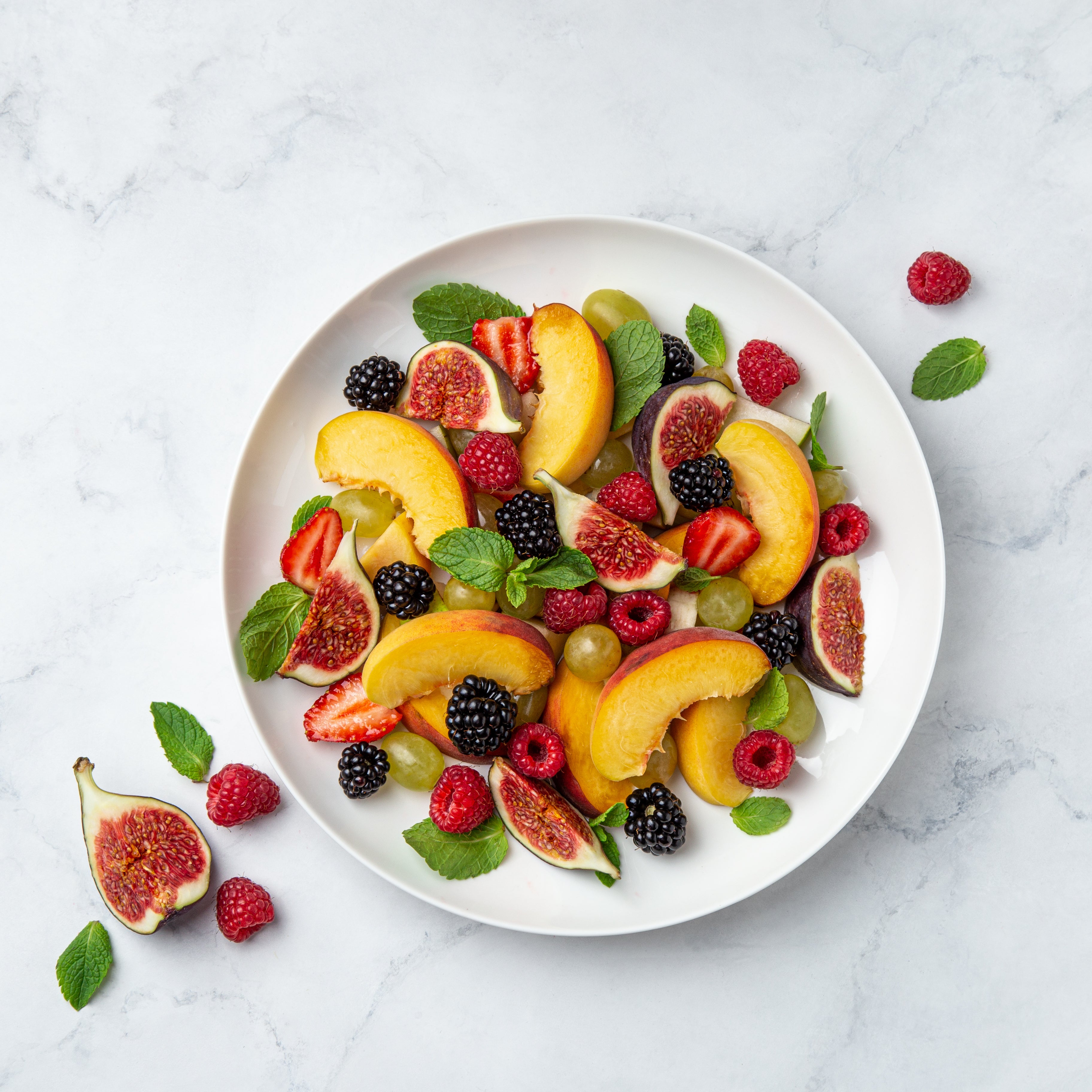A vibrant late summer feast
David Tanis makes the most of the last of the summer weather with a seasonal feast for your friends and family to enjoy

Your support helps us to tell the story
From reproductive rights to climate change to Big Tech, The Independent is on the ground when the story is developing. Whether it's investigating the financials of Elon Musk's pro-Trump PAC or producing our latest documentary, 'The A Word', which shines a light on the American women fighting for reproductive rights, we know how important it is to parse out the facts from the messaging.
At such a critical moment in US history, we need reporters on the ground. Your donation allows us to keep sending journalists to speak to both sides of the story.
The Independent is trusted by Americans across the entire political spectrum. And unlike many other quality news outlets, we choose not to lock Americans out of our reporting and analysis with paywalls. We believe quality journalism should be available to everyone, paid for by those who can afford it.
Your support makes all the difference.Speaking of summer weather, or weren’t we? I pronounce it “exceedingly hot and humid”. While that’s not true of everywhere, of course, I know many people who would emphatically answer yes when asked, “Hot enough for you?” And emphatically no when asked, “Are you going to cook?” Some won’t even turn on the oven or boil a pot of water from June to October.
My friends, cooking in the heat, summertime or not, is part of being a cook. Embrace it. People the world around routinely cook in hot climates every day. Even if you do all your cooking outdoors, you won’t escape without breaking a sweat.
There are strategies to summer cooking. Early morning, before the day heats up, is a good time to get a headstart on dinner. And if you can cook today for tomorrow – in the cool of the evening, perhaps? – so much the better. The recipes in this month’s menu can all be prepared a day in advance, though it is certainly not required.
It’s hard not to wax prosaic when you hit the farmers market right now. Drop-dead gorgeous fruits and vegetables, bursting forth in every colour – be still my heart. Fine, fat and glistening aubergines, check! Ripe tomatoes in every size – to cry for! Runner beans and green beans and fresh shell beans. Peak berries and particularly swoonworthy stone fruit. I’m breathless. Make dinner with that kind of flavourful haul, indoors or out, today or tomorrow, and how can you lose?
With the aubergine, make a smoky spread, flecked with cumin, to smear on flatbread. The first step of the process is fun: you get to burn the heck out of the aubergine. Place them directly on hot coals or in the flames of a gas burner, turning, until they are completely blackened. The inside flesh will have steamed to softness, then it’s just a matter of scraping away the charred skin and mashing the tender, smoke-tinged innards with aromatics, garlic, tahini, lemon and olive oil.
Serve a bright tomato salad to serve alongside. As I learnt from a friend in Istanbul, pomegranate molasses, sumac and toasted walnuts really lend spark to the tomatoes. Or spread shards of warm pita or lavash with the smoky aubergine and top with tomato, if you wish. It’s casual.
At my local farmers market, several stands sell farm-raised meat as a small sideline. From one, I picked up a boneless lamb shoulder, which I knew would braise to succulence if cooked slowly for three hours or so. I would do it either in a covered grill over indirect heat or inside in a slow oven.
Then, the plan was to tear the meat into strips and combine it with beautiful green and yellow runner beans and some of the braising liquor. And to shower it all with lots of refreshing chopped dill, mint and parsley. It’s a combination so winning that I chopped the same herbs to garnish the aubergine and tomatoes, too, and served everything together.
Dessert for this meal is all about stone fruit, melon and berries. A chopped fruit salad, if you will, or a compote (in times past, a dish like this was called a Macedonia). The trick is to do a little more than just macerate the fruits. Instead, dilute a little homemade jam with a splash of wine or liqueur for them to sit in. You’ll add very little sugar, if you use it all. Serve chilled. It’s just the thing on a hot summer day or evening, especially if there’s a breeze. That, and another glass of rosé.
Tomato salad with smoky aubergine flatbread

Buy lavash or pita at a local Middle Eastern market, heat the flatbreads in a dry pan or toaster oven, and smear them with this delicious aubergine spread, enriched with spices and tahini and pleasantly smoky from a cook over an open flame. Serve the flatbreads with this Turkish-style tomato salad, a variation on one I learnt in Istanbul from Turkish chef Gamze Ineceli. Hers is more traditional – finely chopped tomato is customary – but you can also choose the colourful cherry tomatoes at the market and cut them in halves or quarters.
Serves: 4 to 6
Total time: 30 to 40 minutes
Ingredients:
1 large aubergine (about 450g)
4 tbsp extra-virgin olive oil
2 tbsp plus 1 tsp lemon juice
2 tbsp tahini
2 small garlic cloves, grated
2 tbsp plain whole-milk yoghurt
½ tsp toasted ground cumin
Pinch of ground cayenne
Pinch of ground cinnamon
Salt and pepper
1 small red onion, finely diced
2 tbsp pomegranate molasses
½ tsp sumac
450g chopped tomatoes, preferably a mix of larger multicoloured tomatoes and cherry tomatoes
60g chopped toasted walnuts
Warm lavash or pita bread, for serving
3 tbsp chopped dill, for garnish
3 tbsp parsley, for garnish
3 tbsp chopped mint leaves, for garnish
Method:
1. Set the whole, unpeeled aubergine directly over a bed of hot coals, over the open flame of a gas burner at full blast or under the grill. With a paring knife or skewer, poke a few holes into the aubergine to allow steam to escape. Let the skin of the aubergine blacken and blister, turning the aubergine continuously until it is soft, collapsed and completely charred, about 15 to 20 minutes.
2. Set the cooked aubergine on a chopping board, and, when cool enough to handle, cut in half from top to bottom. Let cool to room temperature (about 15 minutes), then scoop out flesh with a spoon, discarding any large seed pockets. Tear or roughly chop aubergine flesh and put in a medium bowl.
3. Add 2 tablespoons olive oil, 2 tablespoons lemon juice, tahini, garlic, yoghurt, cumin, cayenne, cinnamon, and salt and pepper. Beat mixture with a fork, leaving it somewhat rough. Set aside to let flavours meld at room temperature, then taste and adjust seasoning. Transfer to a serving dish.
4. Put diced onion in a medium bowl and season with salt and pepper. Add pomegranate molasses, sumac and 1 teaspoon lemon juice. Stir in 2 tablespoons olive oil.
5. Add chopped tomatoes and fold into onion mixture, sprinkling with a bit more salt, if necessary. Transfer to a serving dish and top with walnuts.
6. Spread aubergine mixture on pieces of warm lavash or pita, keeping the edges clear, and arrange on a platter. Spoon some of the tomato mixture onto each piece. Sprinkle dill, parsley and mint liberally over it all.
Slow-cooked lamb shoulder with green beans
There are many ways to achieve a succulent braised lamb shoulder. In a covered grill over indirect heat or in a low oven, it will take about 3 hours, but you could also use a countertop slow cooker. It’ll take longer but you’ll know the meat is ready when it’s well seasoned and nearly falling apart. For convenience, you may prepare the braise a day or two in advance. Then finish it, cooking it with green beans (or a mixture of various summer beans) and hot pepper, then showering it with chopped parsley, dill and mint.
Serves: 4 to 6
Total time: 3 1/2 to 4 hours
Ingredients:
1 (1.3-1.4kg) boneless lamb shoulder roast
Salt and pepper
1 tbsp roughly chopped garlic
4 rosemary sprigs
6 bay leaves
½ tsp ground allspice
½ tsp ground cloves
1 tbsp extra-virgin olive oil, plus more for drizzling
450g green beans, preferably a mix of green beans, romano beans and yellow wax beans
Red-pepper flakes
2 tbsp chopped parsley, for garnish
2 tbsp chopped dill, for garnish
2 tbsp chopped mint, for garnish
Method:
1. Prepare a covered gas or charcoal grill for medium indirect heat, or heat an oven to 160C.
2. If the roast is tied, remove netting or string. Lay the roast on a work surface and open it flat. Sprinkle the insides with salt, pepper and chopped garlic. Reroll the roast, leaving the garlic inside. Place the roast seam side down in a small roasting pan or 22-by-33cm baking dish just big enough to hold it.
3. Tuck rosemary and bay leaves under the meat. Season the top with salt and pepper, allspice and cloves. Drizzle with olive oil and smear the oil over the surface. Add 2 cups (480ml) water to the pan.
4. Cover the pan tightly with aluminum foil and place in a covered gas or charcoal grill, on set up for medium indirect heat, or in a 160C oven. Cook until the meat is fork-tender, 3 to 3½ hours (be sure to remove the foil about 30 minutes before the end of cooking so that the meat browns). From time to time, check that there’s sufficient liquid in the roasting pan, adding more water as necessary. When the meat is done, set aside until cool enough to handle, then tear into large shreds, reserving any remaining pan juices.
5. Meanwhile, bring a pot of water to the boil and add salt. Blanch beans for about 1 minute, then remove spread out on a baking tray to cool.
6. When ready to serve, heat 1 tablespoon olive oil in a wide frying pan over medium heat. Add blanched beans and stir-fry for 1 minute, then add a pinch of red-pepper flakes. Cook just a bit longer, until the pan juices and shredded meat are warmed through, tossing well. Transfer to a serving dish. Sprinkle with parsley, dill and mint.
Summer fruit compote

In another era, this kind of chopped fruit salad was called a Macedonia. Use as many kinds of ripe fruits as you wish, including melon, stone fruit, grapes and berries. The simple combination of homemade jam dissolved with a splash of white wine or liqueur marries beautifully with the fruits’ natural juices. Leave the compote to macerate a bit and serve chilled for a completely refreshing dessert.
Serves: 4 to 6 servings
Total time: 5 minutes, plus optional chilling
Ingredients:
300g melon, such as cantaloupe or honeydew, peeled, seeded and cut into small cubes
3 large apricots, pitted and cut into small cubes
2 nectarines, pitted and cut into small cubes
2 red plums, pitted and cut into small cubes
2 tbsp apricot jam
2 tbsp white wine or 1 tbsp brandy or other liqueur
1 tbsp lemon juice
150g raspberries, blackberries or a mix
6 ripe figs, halved, for garnish (optional)
Method:
1. In a large bowl, combine melon, apricots, nectarines and plums. Add apricot jam, wine and lemon juice. Toss well to coat. Refrigerate for up to 4 hours, or serve immediately.
2. To serve, add berries to macerated fruit and gently fold together. Spoon into bowls or glasses, and garnish with figs, if using.
And to drink...
When you’re preparing a weeknight meal for two, one bottle will certainly do. But this multicourse summer meal for a group calls out for a white wine with the tomato salad and aubergine spread, and a red for the lamb.
In keeping with the Mediterranean vibe of the appetiser, why not an assyrtiko from Santorini, which can carry the aubergine’s smoky note? Or maybe a dry Lebanese white? If these are hard to find, a Provençal white or even a good dry rosé would be delicious.
Try a red that will take well to a light chill for this lamb dish. A pleasant red with no higher purpose than to quench thirst would be great. Or perhaps a cru Beaujolais after 30 minutes in the fridge.
Pairings by Eric Asimov.
© The New York Times

Join our commenting forum
Join thought-provoking conversations, follow other Independent readers and see their replies
Comments